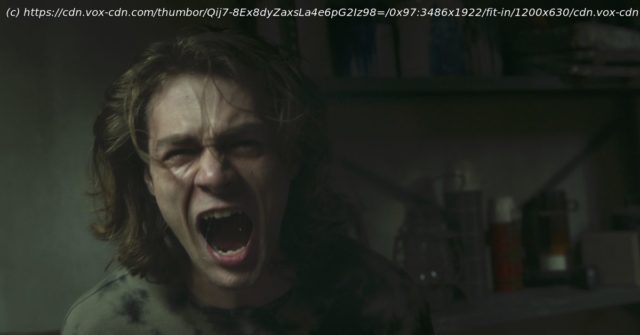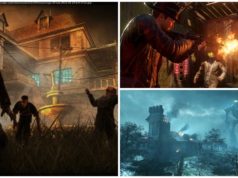Insidious: The Red Door brings back Patrick Wilson (who directs), Rose Byrne, and Ty Simpkins for a final installment, ahead of a new Insidious spinoff.
If the Insidious film series was just a little more popular, there might be a bit of a ruckus online about it apparently ending with 2023’s Insidious: The Red Door. A few weeks before its premiere, trailers entreated viewers to experience the story’s “terrifying conclusion.” At the same time, Screen Gems announced plans for an “Insidious tale,” Thread, starring Mandy Moore and Kumail Nanjiani. While The Red Door brings back original cast members Ty Simpkins, Patrick Wilson, and Rose Byrne, there’s no guarantee they’ll be involved with future Insidious stories.
And that’s regrettable, in a way, because The Red Door is the most fully realized Insidious story so far — not the best entry in the franchise, and certainly not the scariest, but the one that explores the characters’ potential most thoroughly. This installment gives Wilson his first crack at directing, which gives him room to dig deeper into his character.
Will he ever have a chance to do that again? Hard to say. If the Conjuring universe, another horror movie series originated by director James Wan, were coming to a definitive close, there would certainly be more (or clearer) press about it. But while the Insidious series came first, it’s always been something of a kid brother to the blockbuster Conjuring movies and their spinoffs, like Annabelle and The Nun. That’s part of its stealthy charm.What makes the Insidious movies work
In a lot of ways, Wan’s first Insidious does play like a dry run for The Conjuring. Both feature a family bedeviled by ghostly figures in their home, though Insidious is the rare horror film where the family actually moves away from the seemingly haunted house mid-movie. (Turns out, it wasn’t the house that was haunted.) Insidious has some of the slow-burn stateliness Wan later emphasized with his traveling-camera takes through the Conjuring house, but in Insidious, he mixes it with a PG-13 version of the shock-horror of his earlier Saw and Dead Silence.
Though the first Insidious isn’t as manic as vintage Sam Raimi, it has some of Raimi’s carnival spookhouse energy. “The Further,” the realm young Dalton Lambert (Simpkins) disappears into when he astral projects too far outside his body, is unashamedly depicted as pretty much the same as our world, only with ample fog machines, spooky lighting, and garishly made-up ghosts, like a lower-budget progenitor of the Upside Down from Stranger Things.
The Conjuring is the ideal cinematic universe
Wan directed one more entry in the series, Insidious: Chapter 2, before leaving his collaborator Leigh Whannell (who also wrote the first four films) to direct Chapter 3, which moves away from the Lambert family for a prequel about how professional medium Elise (Lin Shaye) dedicated herself to exploring The Further. A fourth film, Insidious: The Last Key, delves into Elise’s backstory, and leads straight into the beginning of the first entry. How The Red Door picks up the Insidious threads
The Red Door rejoins the Lambert family around a decade after the events of the first film. In a bid to ease the troubled psyches of young Dalton and his father Josh (Wilson), who share their astral projection ability, the pair has undergone hypnosis to make them forget all about the events of the first two movies. But of course, dark family secrets can’t stay buried forever, especially when they involve ghosts who look kind of like Darth Maul.
Puzzle-piece, hopscotched continuity is nothing new in horror cinema, but it’s notable in today’s cinematic-universe world that the Insidious franchise hasn’t (so far) required actual spinoffs in order to, well, spin off in different directions.
Home
United States
USA — software Insidious: The Red Door isn’t the series’ scariest movie, but it’s the...






